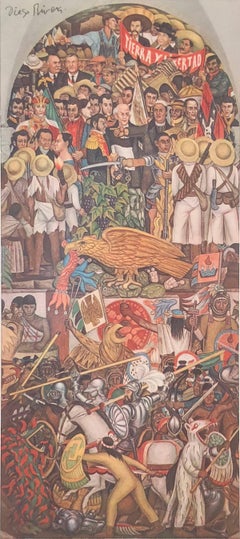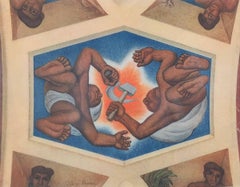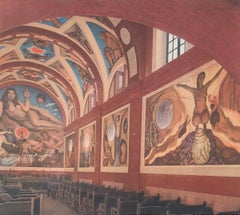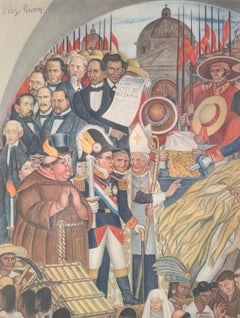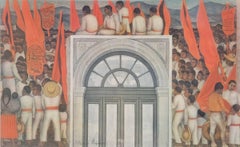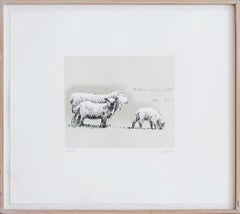(after) Diego Rivera Art
Diego Rivera was a prominent Mexican painter. His large frescoes helped establish the mural movement in Mexican and international art. Rivera was born as one of the twin boys in Guanajuato, Mexico, to María del Pilar Barrientos and Diego Rivera Acosta, a well-to-do couple. His twin brother Carlos died two years after they were born. They were said to have Converso ancestry. After moving to Paris, Rivera met Angelina Beloff, an artist from the pre-Revolutionary Russian Empire. They married in 1911 and had a son, Diego (1916–1918), who died young. Rivera died in Mexico City on November 24, 1957.
1930s Realist (after) Diego Rivera Art
Lithograph
1930s Modern (after) Diego Rivera Art
Lithograph
1930s Modern (after) Diego Rivera Art
Lithograph
1930s Modern (after) Diego Rivera Art
Lithograph
1930s Modern (after) Diego Rivera Art
Lithograph
1930s Modern (after) Diego Rivera Art
Lithograph
1970s Realist (after) Diego Rivera Art
Paper, Lithograph
1980s Realist (after) Diego Rivera Art
Lithograph
1980s Modern (after) Diego Rivera Art
Lithograph
1970s Modern (after) Diego Rivera Art
Lithograph, Screen
1990s Realist (after) Diego Rivera Art
Ink, Offset, Lithograph
1980s Realist (after) Diego Rivera Art
Lithograph
1980s Modern (after) Diego Rivera Art
Lithograph
1980s Realist (after) Diego Rivera Art
Lithograph
Late 20th Century Modern (after) Diego Rivera Art
Lithograph
1970s Realist (after) Diego Rivera Art
Lithograph
1970s Modern (after) Diego Rivera Art
Lithograph, Offset
1930s Modern (after) Diego Rivera Art
Lithograph
(after) Diego Rivera art for sale on 1stDibs.
Artists Similar to (after) Diego Rivera
- 1stDibs ExpertFebruary 13, 2024Diego Rivera's style of art was Cubism. However, the Mexican artist developed his own distinctive version of the style. In 1909, he settled in Paris, where he befriended the Spanish artist Pablo Picasso and esteemed French painter Georges Braque, both of whom were pioneers of Cubism. Rivera built on their work, creating works in bright colors and varying the thickness of paint to produce bold textural effects. In addition to his experimentation with Cubism, Rivera also worked in the social realism style later in his career. On 1stDibs, explore a variety of Diego Rivera art.
- 1stDibs ExpertApril 16, 2024You can see Diego Rivera's paintings in many places. His work is in the collections of museums across the world, such as the Art Institute of Chicago, the Museum of Modern Art in New York City, the Museo Mural Diego Rivera in Mexico City and the Peggy Guggenheim Collection in Venice, Italy. In addition, you can view the artist's murals in many of their original locations, including the City Club in San Francisco and the Detroit Institute of Arts. On 1stDibs, shop a range of Diego Rivera art.
- 1stDibs ExpertMarch 22, 2022Yes, Diego Rivera did 20 self-portraits during the course of his life. However, his wife, Frida Kahlo, produced one of the best-known depictions of the artist in her painting Diego and I, which depicts him with a third eye. You'll find a variety of Diego Rivera art on 1stDibs.
- 1stDibs ExpertApril 5, 2022Some of Mexican painter Diego Rivera’s large murals can be seen today in Mexico City, Detroit, and San Francisco, and his paintings are displayed in numerous museums across Mexico and the United States. Shop a selection of Diego Rivera paintings from top art dealers on 1stDibs.
